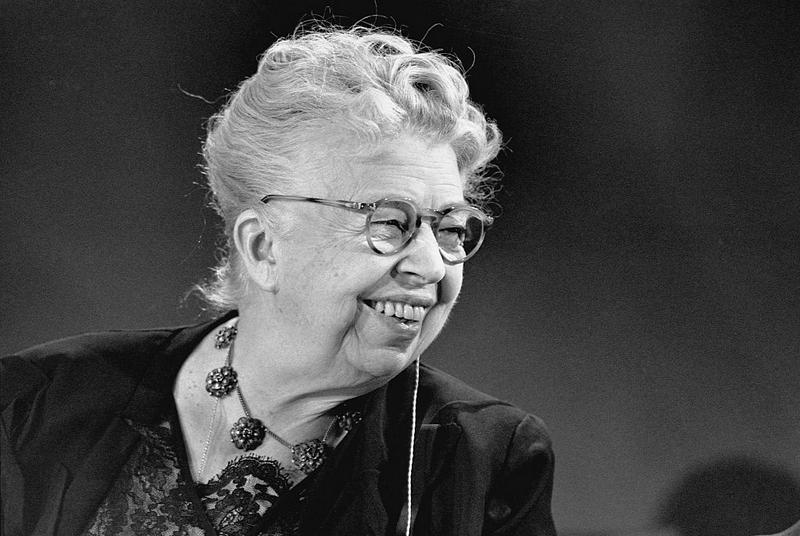Eleanor Roosevelt: Facts And Trivia You Didn't Know About The Feminist Icon
By | October 9, 2020

As FDR's first lady, Eleanor Roosevelt matured into a icon of the feminist movement and a symbol of charity and activism. But she wasn't always the wise, confident, charismatic woman she became in her later years.

She Was Born A Roosevelt
Feminist that she was, it's likely that Eleanor Roosevelt wouldn't have changed her name when she got married, but as luck would have it, she didn't have to. In fact, when then-president (and her uncle) Theodore Roosevelt walked her down the aisle at her wedding, he quipped, "Nothing like keeping the name in the family." It was no coincidence: Franklin Delano Roosevelt was actually her fifth cousin, once removed.

Her Mother Thought She Was Ugly
Eleanor's mother, Anna, was a beautiful woman but ashamed of her daughter, who she regarded as a failure in the beauty department. She was cold and distant to Eleanor and even called her "Granny" because of her frumpy appearance and serious nature.
While she was starved for attention as a child, she grew to understand that beauty is only skin deep. She knew she had plenty going for her: At 5'10, she was athletically built, and she always said that the happiest moment of her life was when she found out she made her school's field hockey team. When she was 14, she wrote, "No matter how plain a woman may be, if truth and loyalty are stamped upon her face, all will be attracted to her."

She Didn't Let A Shipwreck Stifle Her Sense Of Adventure
Eleanor Roosevelt was just three years old when she escaped death in a terrifying shipwreck. She was a passenger on the S.S. Britannic, along with her parents and aunt, when it collided with another ship, the S.S. Celtic. As her ship took on water, young Eleanor was lowered into a lifeboat and taken with her parents aboard the Celtic, which then returned to New York.
The experience left Roosevelt with a lifelong fear of ships, but she loved the newest form of transportation: flying. In the 1930s, she developed a close friendship with famed aviator Amelia Earhart, and one time, the pair sneaked out of a White House function so that Earhart could take the First Lady on a ride in her airplane. Eleanor so loved the thrill of flying that she obtained a student permit, but her husband put an end to her aviation dreams.

Happily Ever After?
Politically, Franklin and Eleanor Roosevelt were a great match. They were intellectual, from "good" families (or rather, family), and passionate about helping people. The passion didn't appear to extend to their private lives, however. Almost as soon as they married, Eleanor became aware that her husband had a mistress, and rumors have persisted for decades that one or both Roosevelts were gay.
Eleanor was particularly close to a journalist named Lorena Hickok, who famously eschewed all things conventionally feminine and encouraged Eleanor to host her own women-only press conferences to discuss women's issues. Correspondence between them hints that their friendship was something more, but even without concrete proof, Eleanor Roosevelt is an icon of today's LGBT community.
Whatever the case, Franklin and Eleanor had six children together, but Eleanor didn't enjoy the physical side of marriage. She once described sex as an "ordeal to be borne" and usually chose to focus her energies on her public life rather than the domestic sphere.
Even if they'd enjoyed the storybook romance they displayed to the public, FDR's mother, Sarah Delano, made herself a constant wedge between the couple. When Mrs. Delano found out about Franklin's secret proposal to Eleanor, she all but kidnapped him, whisking him off on a Caribbean cruise to separate him from his betrothed. Of course, it didn't work, so Delano had to settle for meddling in the rest of their lives. She lived with the couple and controlled all aspects of the household, doling out a weekly allowance to the newlyweds well after the honeymoon phase.

Out Of The (White) House
Between 1935 and 1962, Eleanor produced a newspaper column called "My Day" in which she wrote about everyday family life as well as her thoughts on hot-button issues of the day. She never missed a week, except when her husband died unexpectedly in 1945.
In a rare move by a former First Lady, Eleanor Roosevelt used her celebrity to hawk a wide rage of consumer goods on television. She appeared in commercials for everything from mattresses to hot dogs. In the 1950s, when the proprietors of a new non-dairy, butter-like spread had trouble moving their product, they paid Roosevelt $35,000 to appear in a commercial endorsing margarine. It did the trick: Her commercial boosted margarine sales considerably, and Eleanor used her fee to buy 6,000 care packages for families in need.

